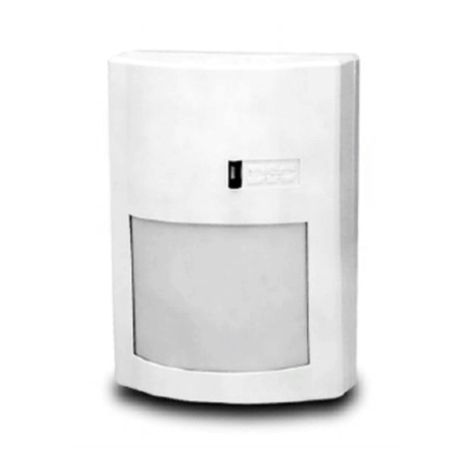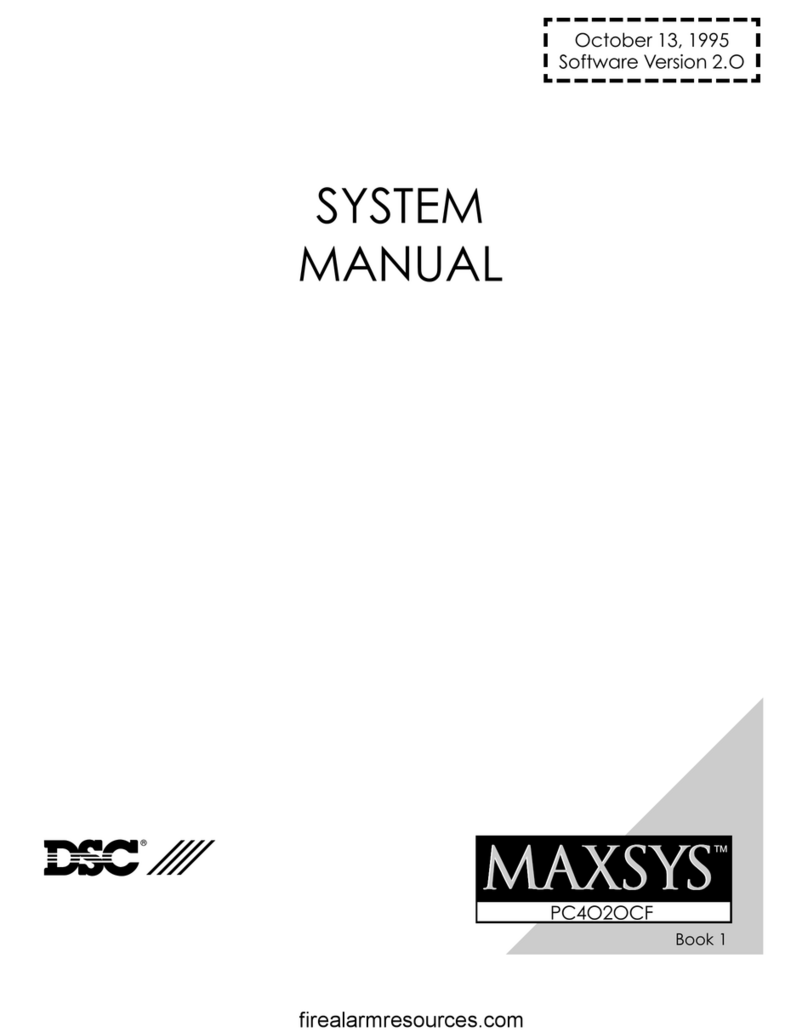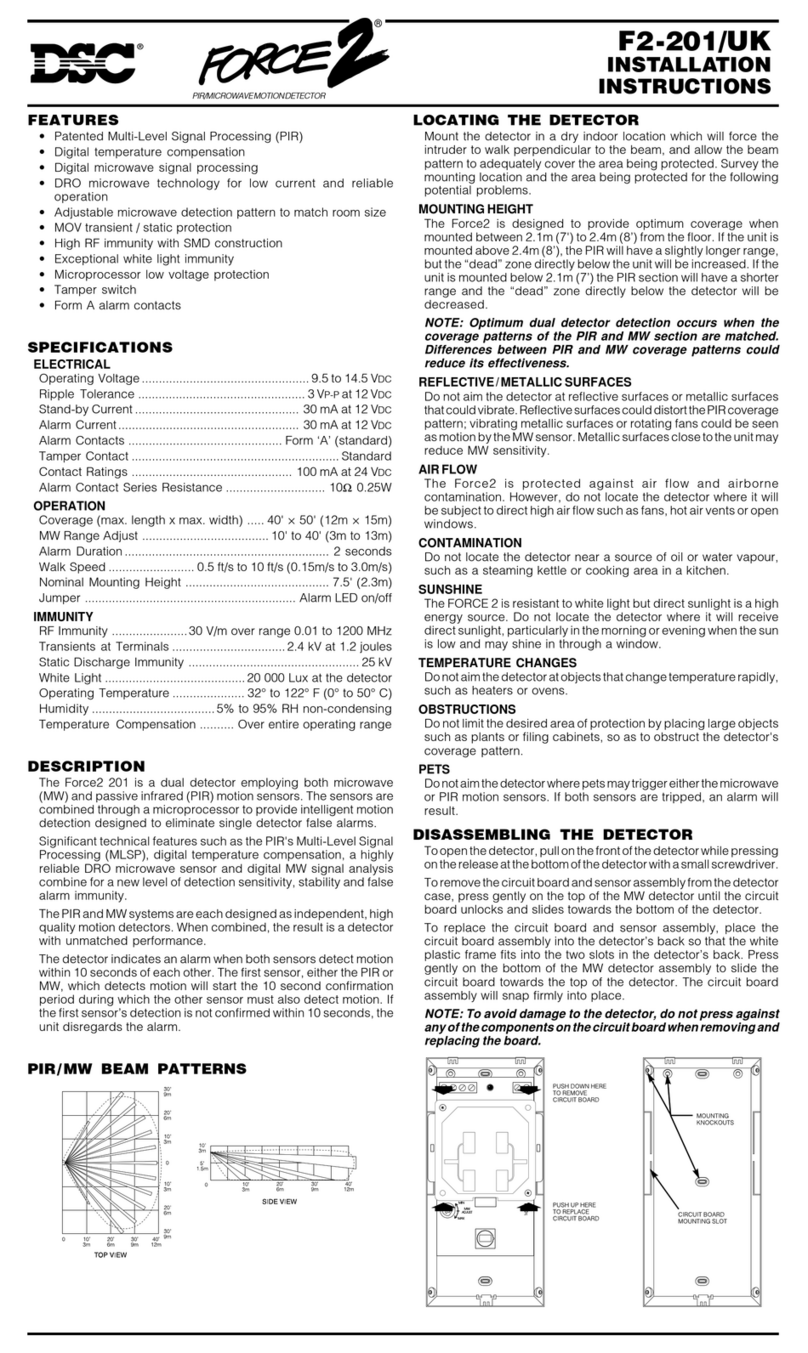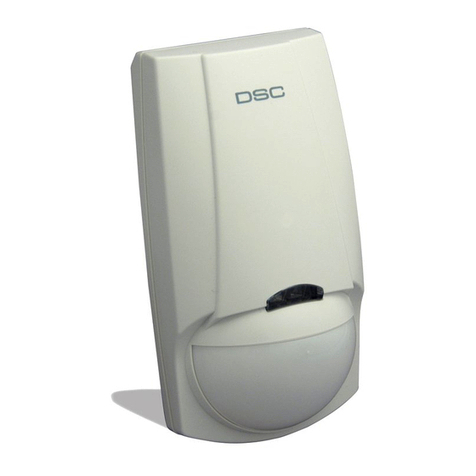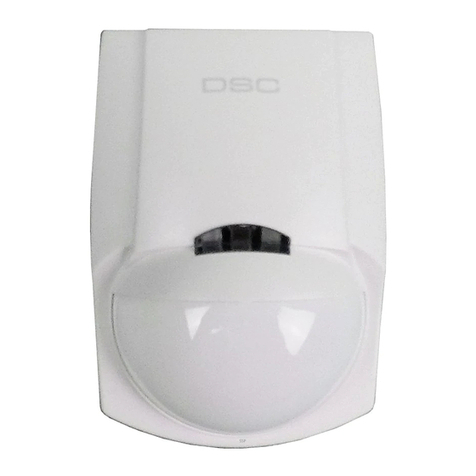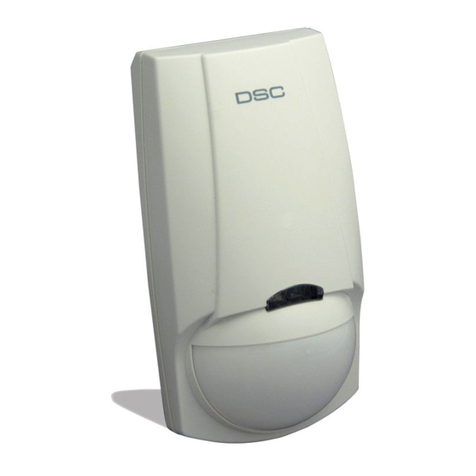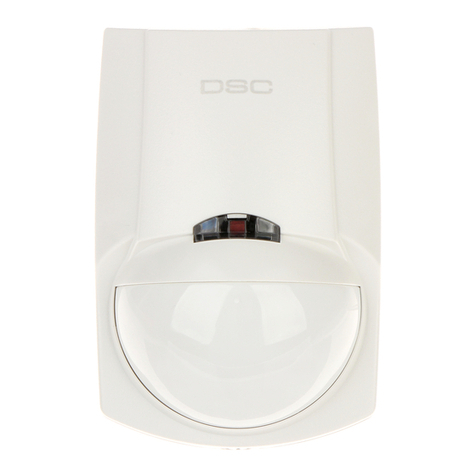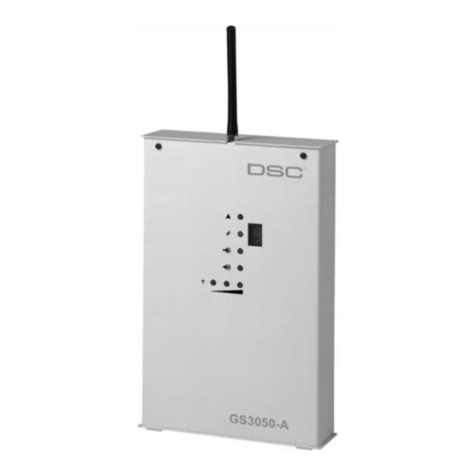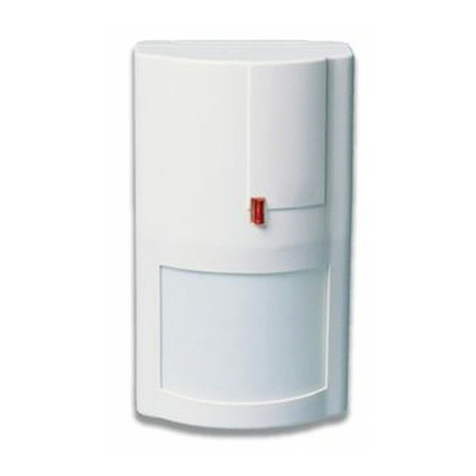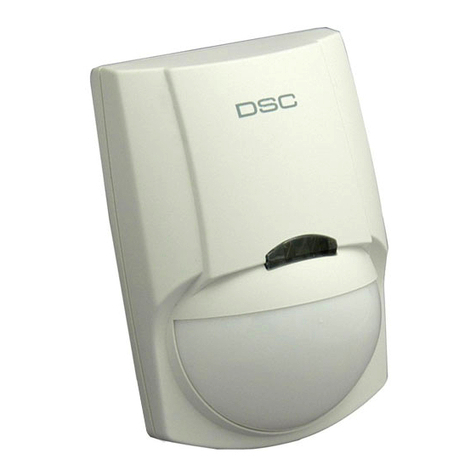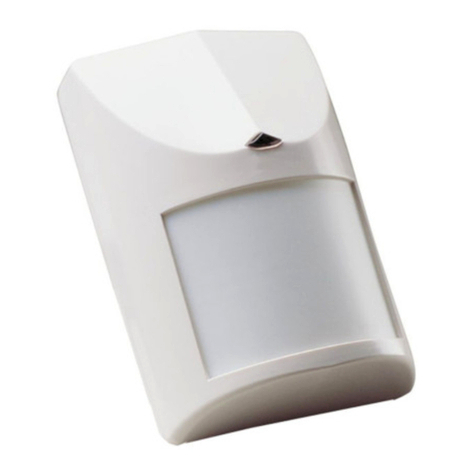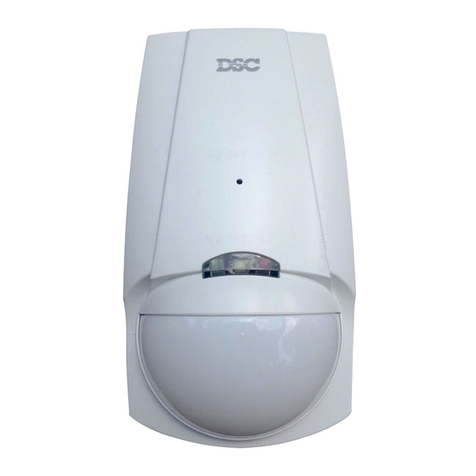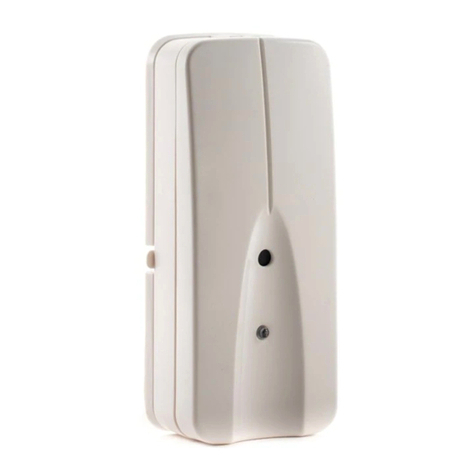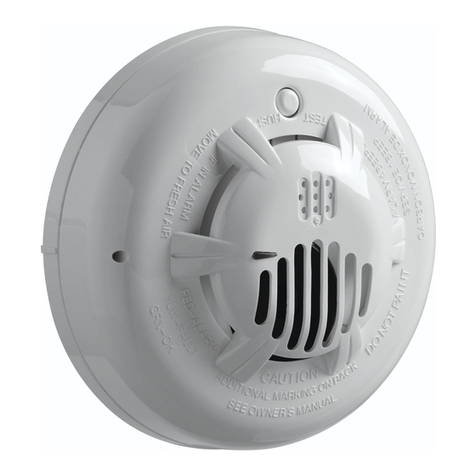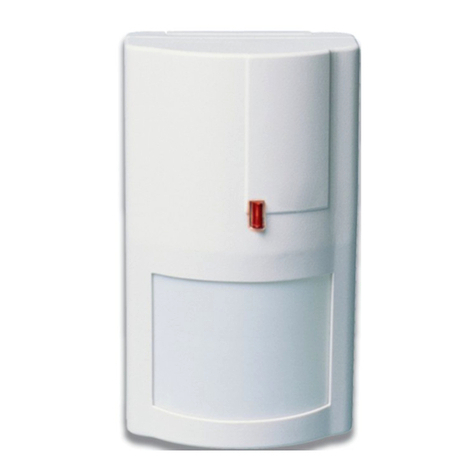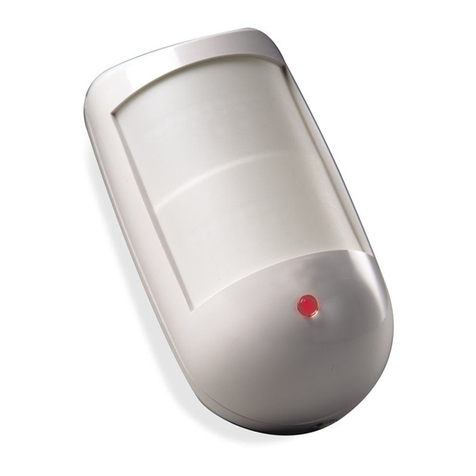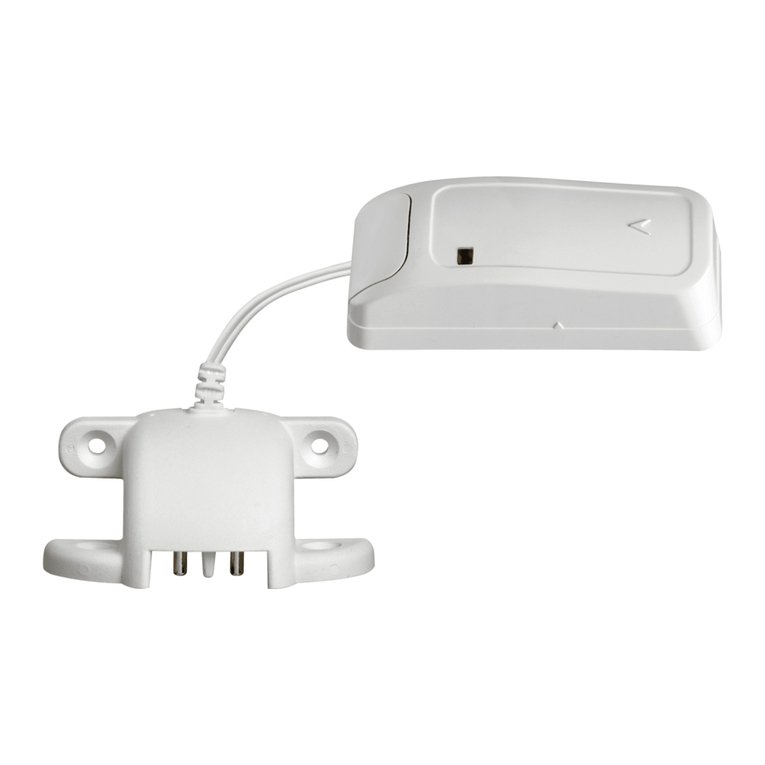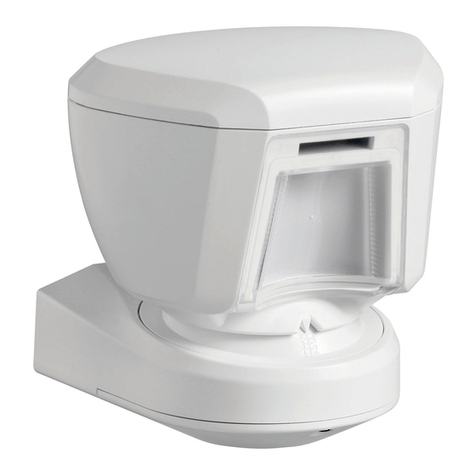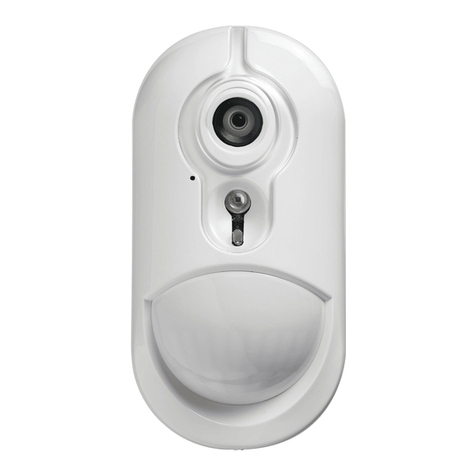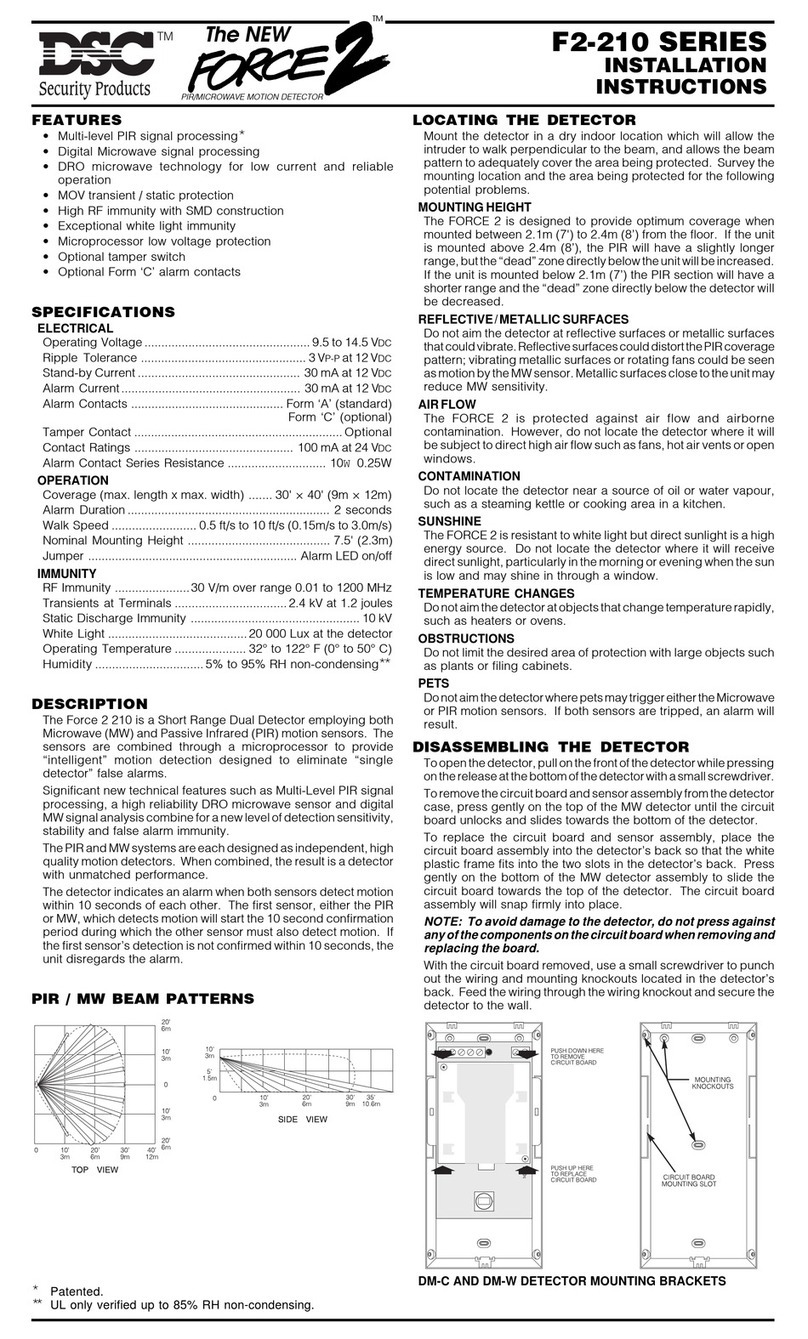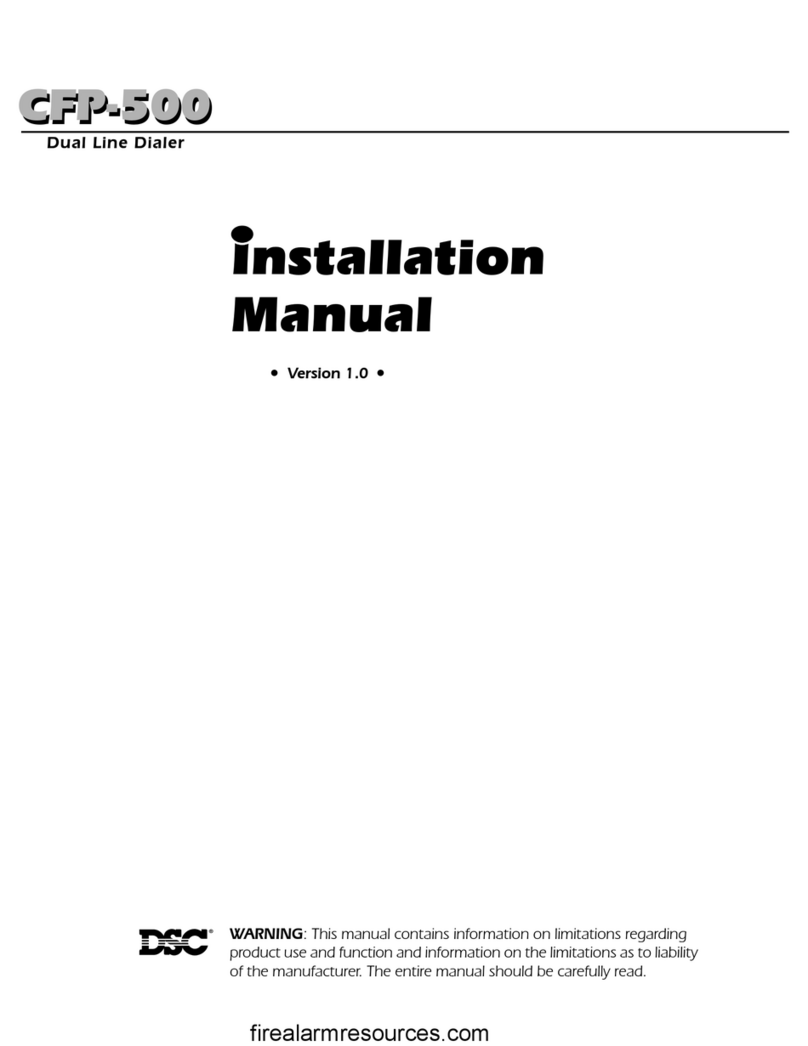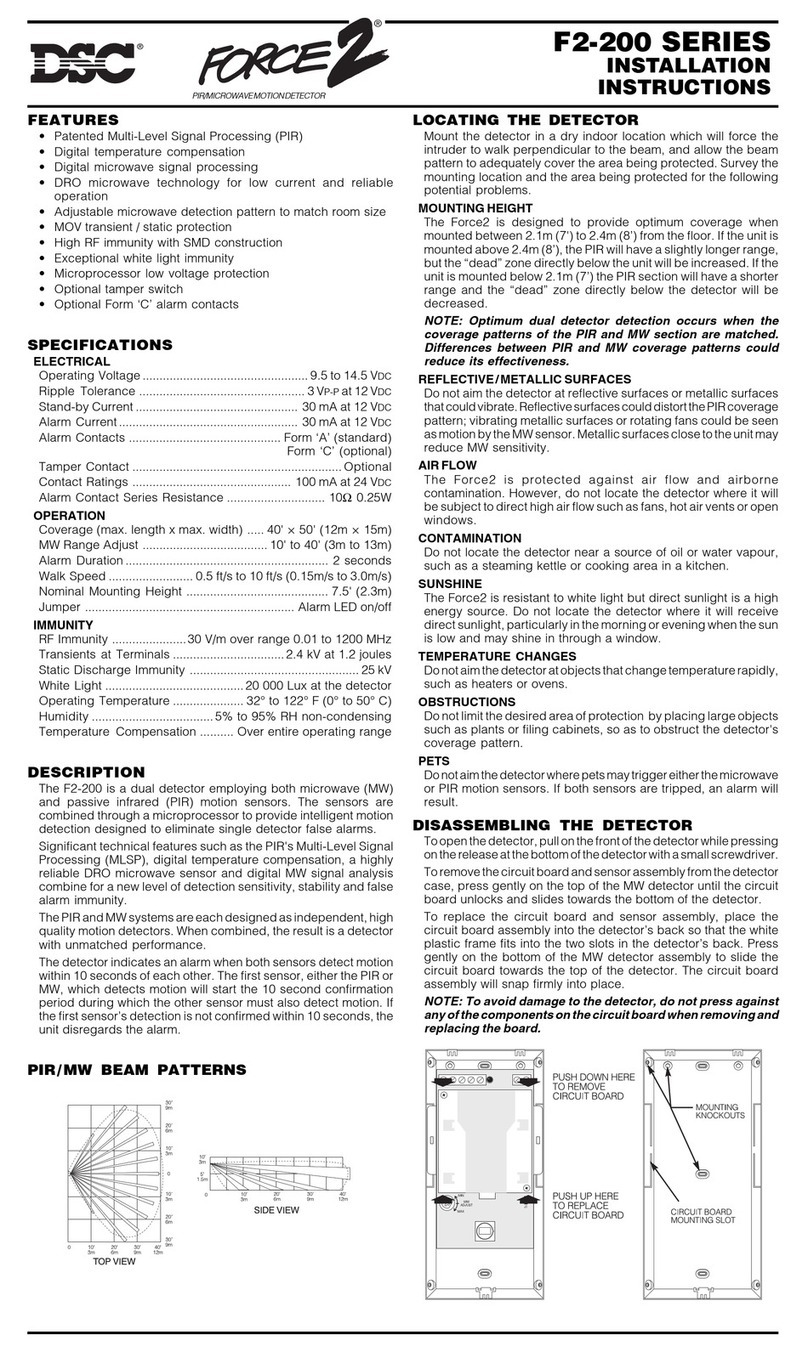
6
5 Selecting mounting location
The installation of the LC-171 requires a solid, level base for the mounting bracket and must be
located in a manner that when the detector is mounted, it is facing the center of the desired
detection zone.
It is recommended that the detector will face
a solid border limiting the detection area, such as the
building structure or fencing wall, to avoid undesired detection
range.
The protected area must be free from obstacles like walls,
fences, trees, ditches and other microwave detectors.
Choose a location most likely to intercept an intruder according to detection pattern on page 5.
Avoid the Following Installation Locations:
•Facing direct sunlight.
•Facing areas subject to rapid temperature changes.
•Mounted at more than 10º from the vertical or horizontal plane.
•Facing metal doors.
•Near direct sources of heat or airflow.
•Clear all physical obstacles from the detection area
(e.g. plants, laundry, etc.)
•Clear all light reflecting surfaces from the detection area,
including puddles or other standing water.
•Avoid installation on the following types of ground:
Thick vegetation, Grass (un-mown), Water, Sand and Metal.
NOTES:
•Recommended installation height is 1.2m (4ft).
•The DUAL (Four Elements) high quality sensor detects motion crossing the beam; it is less
sensitive detecting motion towards the detector.
•The LC-171 performs best when provided with a constant and stable environment.
•In order to ensure suitable operation of the LC-171 type of ground should be one of the
following: Asphalt concrete, Cement, Soil, Clay, Gravel or Grass (mown).
•Sensitivity adjustment may be required upon extreme temperature changes.
Extremely high temperature will reduce detection range.
Extremely low temperature will increase detection range.
Choose proper installation location to avoid resetting.






